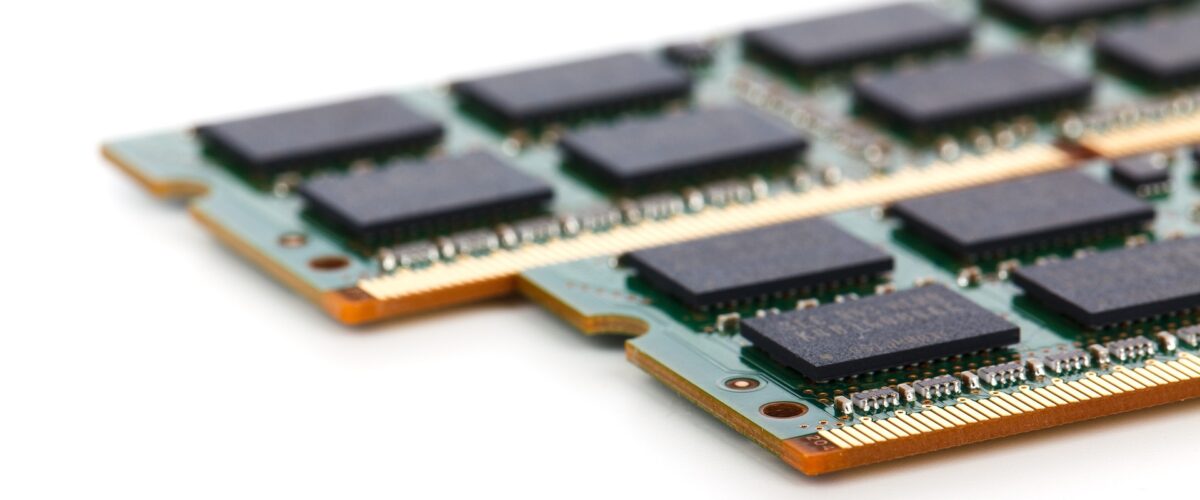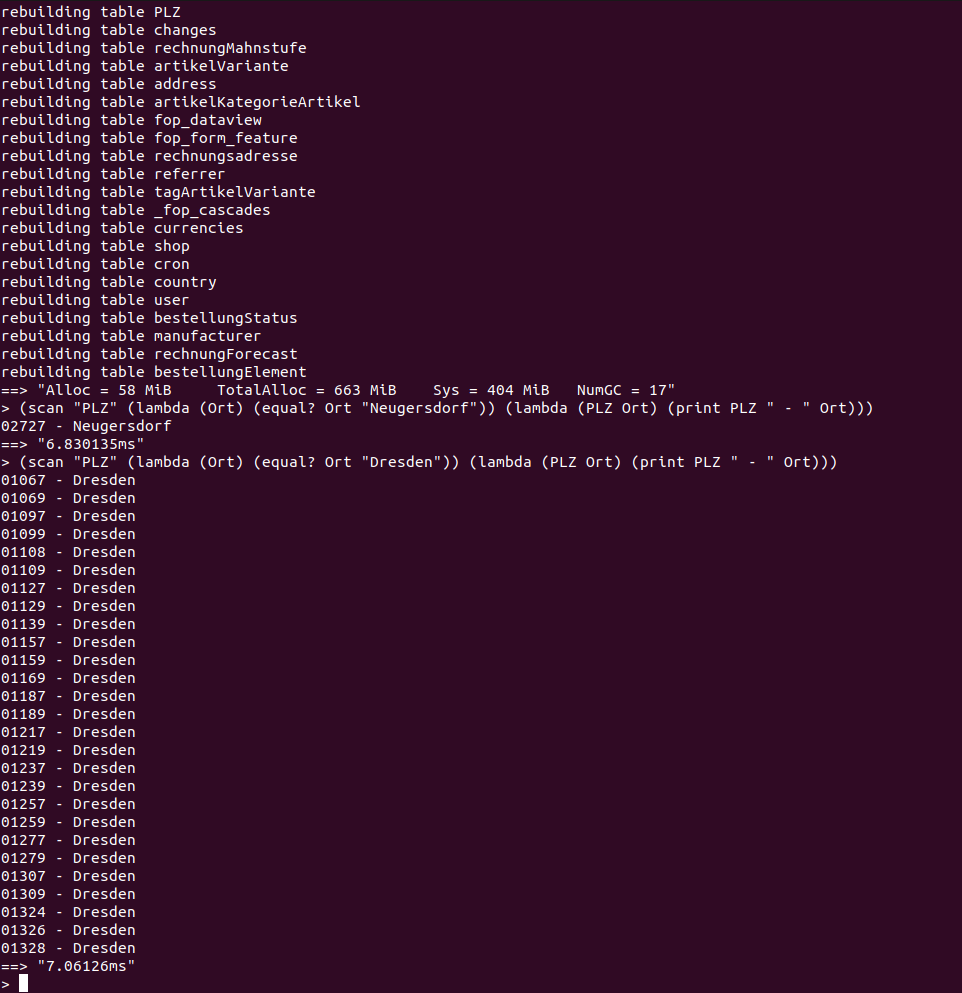
The advantages for columnar storages over row based storages are the ability for good in-memory compression (low memory usage) and cache locality when accessing only few columns (performance).
Designing an Interface
When designing an interface for a storage engine for an in-memory database, a lot of considerations have to be made. Here are the design goals:
- The interface must be simple so that using it does not require implementing all kinds of corner cases (especially with datatypes)
- The interface must allow fast value fetches for random data access
- The interface must allow analyzing the data and finding the perfect storage and compression format
Here’s what I came up with:
type ColumnStorage interface {
getValue(uint) scmer // read function
// buildup functions 1) prepare 2) scan, 3) proposeCompression(), if != nil repeat at 1, 4) init, 5) build; all values are passed through twice
// analyze
prepare()
scan(uint, scmer)
proposeCompression() ColumnStorage
// store
init(uint)
build(uint, scmer)
finish()
}
The read interface is pretty simple: getValue(i) will read the column value at recordId i and return the scmer value. scmer is a kind of „any“ datatype that is used in our scheme interpreter to further process the data.
Data Analysis on Columnar Storages
The write interface is a bit more complicated and basically works in two passes:
- analyze phase:
prepare()is called- every future value that shall be stored will be passed to
scan(recordId, value) - the columnar storage will analyze the data. If it knows a better storage format than its own class, it will return an other column container when calling
proposeCompression() - when
proposeCompression()returns another container, repeat step 1 analyze phase with the new container - otherwise proceed with the store phase
- store phase
init(size)is called where the storage can allocate the memory for its columns- for each value,
build(recordId, value)is called to write the data to memory - for cleanup of possible reverse dictionaries that are only needed in the store phase,
finish()is called
During analyze phase, statistics about the data can be collected. This allows a storage engine to check how wide the integers are or if there are lots of string duplicates.
The classes implementing that interface are then structured as follows:
StorageSCMERis a universal value storage; fast but needs lot of RAMStorageSCMERanalyzes a column whether it better fits the StorageString or StorageInt scheme; otherwise (i.e. for float64 values, stay at StorageSCMER)StorageIntis a bit compressed integer storage. When analyzed values do not exceed i.e. 15, the storage will only eat up 4 bits per stored integer. The numbers are stored in an array of 64 bit integers which are shifted when reading and writingStorageStringis a dictionary compressed string storage using golang slices
With this interface we have built a powerful interface to implement any columnar storage compression format. We can support bit compressed integers as well as dictionaries.
Evaluation
We loaded a bunch of 55MiB of .jsonl files into our storage. This is our memory usage using the storage interface:
| Storage | Memory Usage |
| MySQL InnoDB original storage | 55 MiB Disk Space |
| Export from MySQL in .jsonl format | 55 MiB Disk Space |
| Imported .jsonl as []map[string]scmer into delta storage | 233 MiB RAM |
Moved to main storage only using StorageSCMER | 81 MiB RAM |
Using StorageInt for integer columns | 46 MiB RAM |
Using StorageString for string columns | 58 MiB RAM |
Using StorageInt and StorageString | 23 MiB RAM |
As you see, RAM compressed columnar storage needs only about half the RAM compared to disk based InnoDB storage or .json files.

